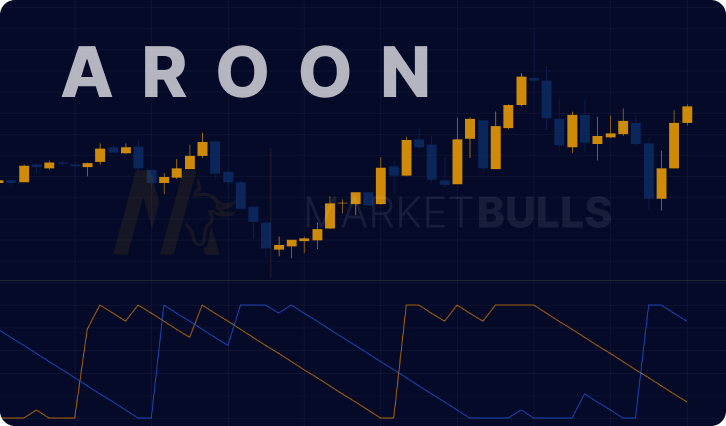Ever wished for a crystal ball that could help you predict the financial market's every move? Well, the Aroon Indicator Strategy might just be your answer. Dive into our comprehensive guide to master this powerful trading strategy and navigate the trading seas with increased confidence and accuracy. So, fasten your seatbelts because you're about to experience a new world of strategic trading.
Understanding the Aroon Indicator Strategy
Before we set sail, it's essential to understand what the Aroon Indicator Strategy is. Developed by Tushar Chande in 1995, the Aroon Indicator is a system that identifies whether a stock is trending or not and how strong the trend is. 'Aroon' in Sanskrit means 'Dawn's Early Light,' symbolizing the indicator's ability to spot the emergence of a new trend.
But, you might ask, "How does the Aroon Indicator do that?" Well, it uses two lines, the Aroon Up and the Aroon Down, to achieve this. These two lines work in tandem, helping traders to predict both the strength and direction of a trend.
Implementing the Aroon Indicator Strategy
Once you've grasped the basic concept of the Aroon Indicator Strategy, it's time to dive deeper into its practical application. This section will guide you on how to implement the Aroon Indicator Strategy in your day-to-day trading and unlock its potential benefits.
First off, the Aroon Up line signifies the strength of an uptrend, while the Aroon Down line signals a downtrend. When the Aroon Up crosses above the Aroon Down, it's generally considered a bullish signal. Conversely, when the Aroon Down crosses above the Aroon Up, it can be taken as a bearish signal.
A Step-by-Step Guide to Trading with the Aroon Indicator Strategy
Trading with the Aroon Indicator might seem intimidating at first, but it's quite simple once you get the hang of it. Here's a step-by-step guide on how to trade using the Aroon Indicator Strategy:
Set up the Aroon Indicator on your trading platform. Most platforms offer this indicator in their standard package.
Identify the Aroon Up and Aroon Down lines. The Aroon Up line is usually colored green, while the Aroon Down line is red.
Watch for the Aroon Up line to cross above the Aroon Down line. This is considered a bullish signal, and it might be a good time to consider entering a long position.
On the flip side, if the Aroon Down line crosses above the Aroon Up line, it's seen as a bearish signal. Traders might consider this a good time to enter a short position.
Monitor your trade closely. If the lines start to converge, it could be an early sign of a weakening trend, and you might want to think about exiting your position.
Remember, while the Aroon Indicator Strategy is a powerful tool, it should be used in conjunction with other indicators and tools for the best results.
Benefits and Limitations of the Aroon Indicator Strategy
Like any other trading strategy, the Aroon Indicator Strategy also has its pros and cons. Understanding these can help you decide when to use this strategy and when to rely on other indicators.
Benefits:
Reliable trend identification: The Aroon Indicator is excellent at identifying the start of new trends, which can be incredibly valuable in the fast-paced trading world.
Timely exit signals: By providing early warnings of trend weakening, the Aroon Indicator Strategy helps traders know when to exit a position.
Limitations:
False signals: Sometimes, the Aroon Indicator might give a false signal, particularly in a volatile market. Therefore, it's advisable to use it in conjunction with other indicators. like TRIX, to increase accuracy.
Limited use in range-bound markets: The Aroon Indicator works best in trending markets and might be less effective during sideways market movements.
Conclusion
In conclusion, the Aroon Indicator Strategy is a valuable tool for any trader's arsenal. It offers reliable trend identification and strength measurement, making it easier to time entries and exits. The step-by-step guide provided above should help you to start implementing this strategy in your trading.
However, like all trading strategies, it's not infallible. It can give false signals in volatile markets and may not be as effective in range-bound situations. Therefore, it should be used in conjunction with other indicators and strategies for the best results. Remember, effective trading is not about finding a silver bullet; it's about using a variety of tools and strategies to make the most informed decisions possible. Happy trading!
Frequently Asked Questions
The Aroon Indicator measures the strength and direction of a trend by examining the time between highs and lows over a set time period.
When the Aroon Up crosses above the Aroon Down, it’s considered a bullish signal. If the Aroon Down crosses above the Aroon Up, it’s interpreted as a bearish signal.
Yes, the Aroon Indicator Strategy can be applied to various time frames, making it suitable for both short-term and long-term trading.
While the Aroon Indicator was initially designed for the stock market, it can also be used effectively in other markets like Forex, commodities, and indices.
Other trend and momentum indicators, such as Moving Averages or the Relative Strength Index (RSI), can be used alongside the Aroon Indicator Strategy for better accuracy.
In a highly volatile market, the Aroon Indicator Strategy may sometimes give false signals. Therefore, combining it with other indicators is recommended for more reliable results.





